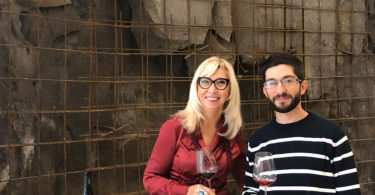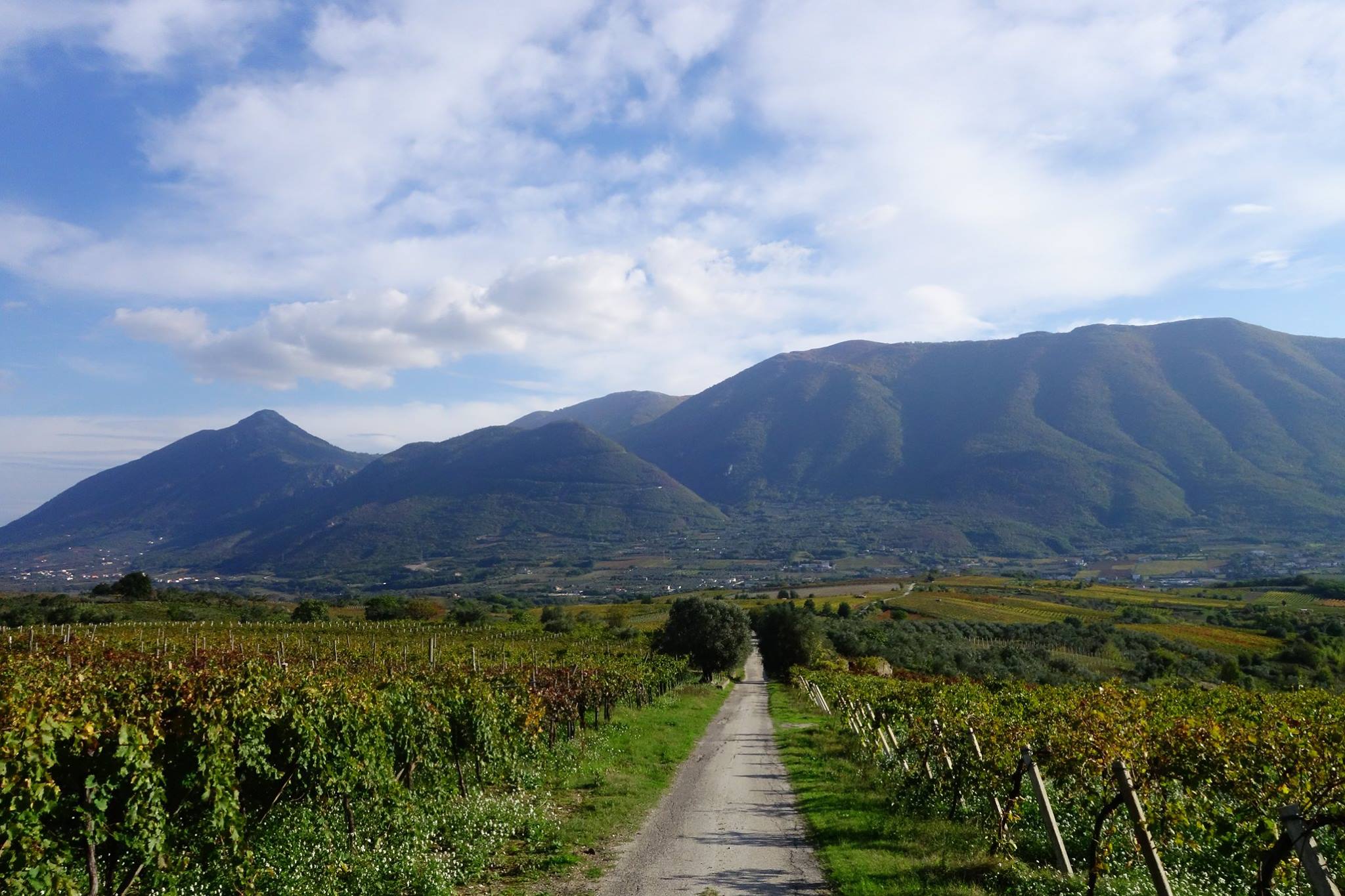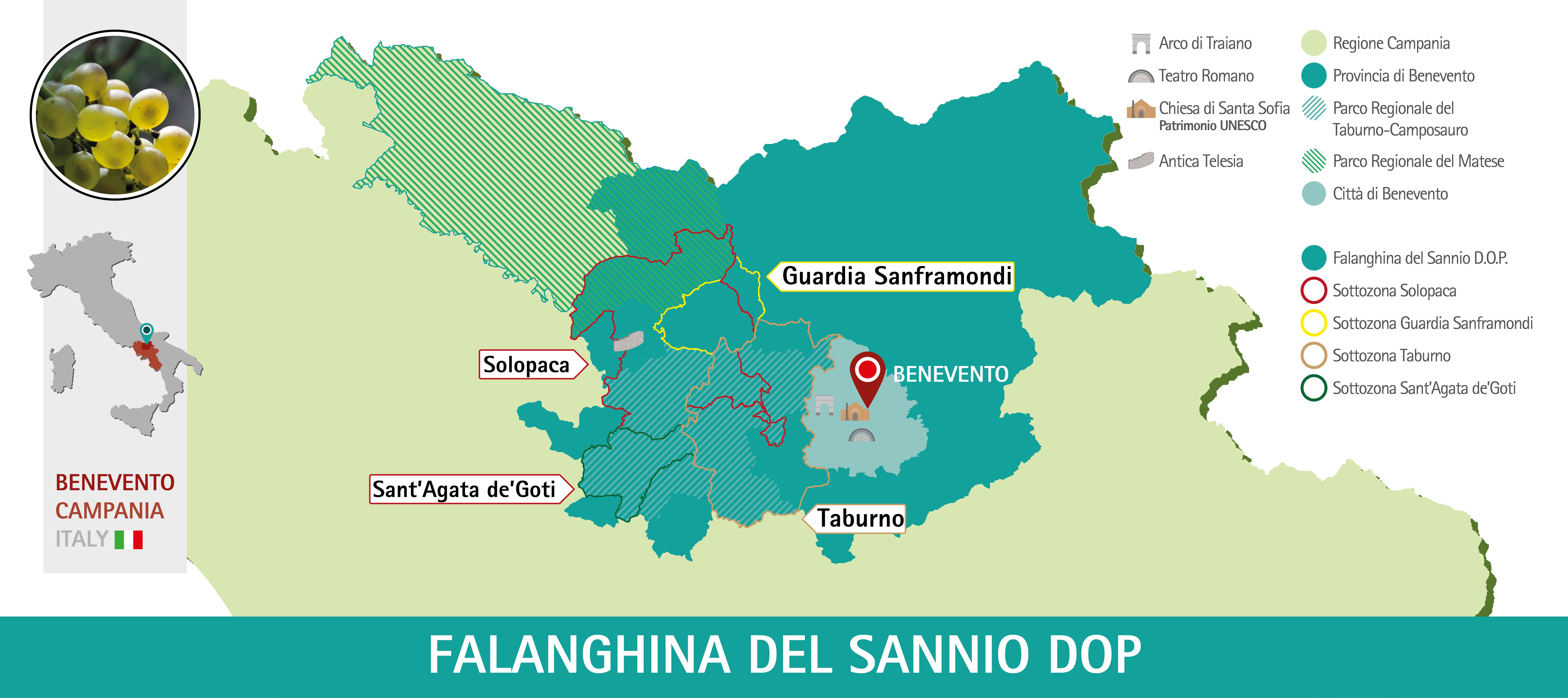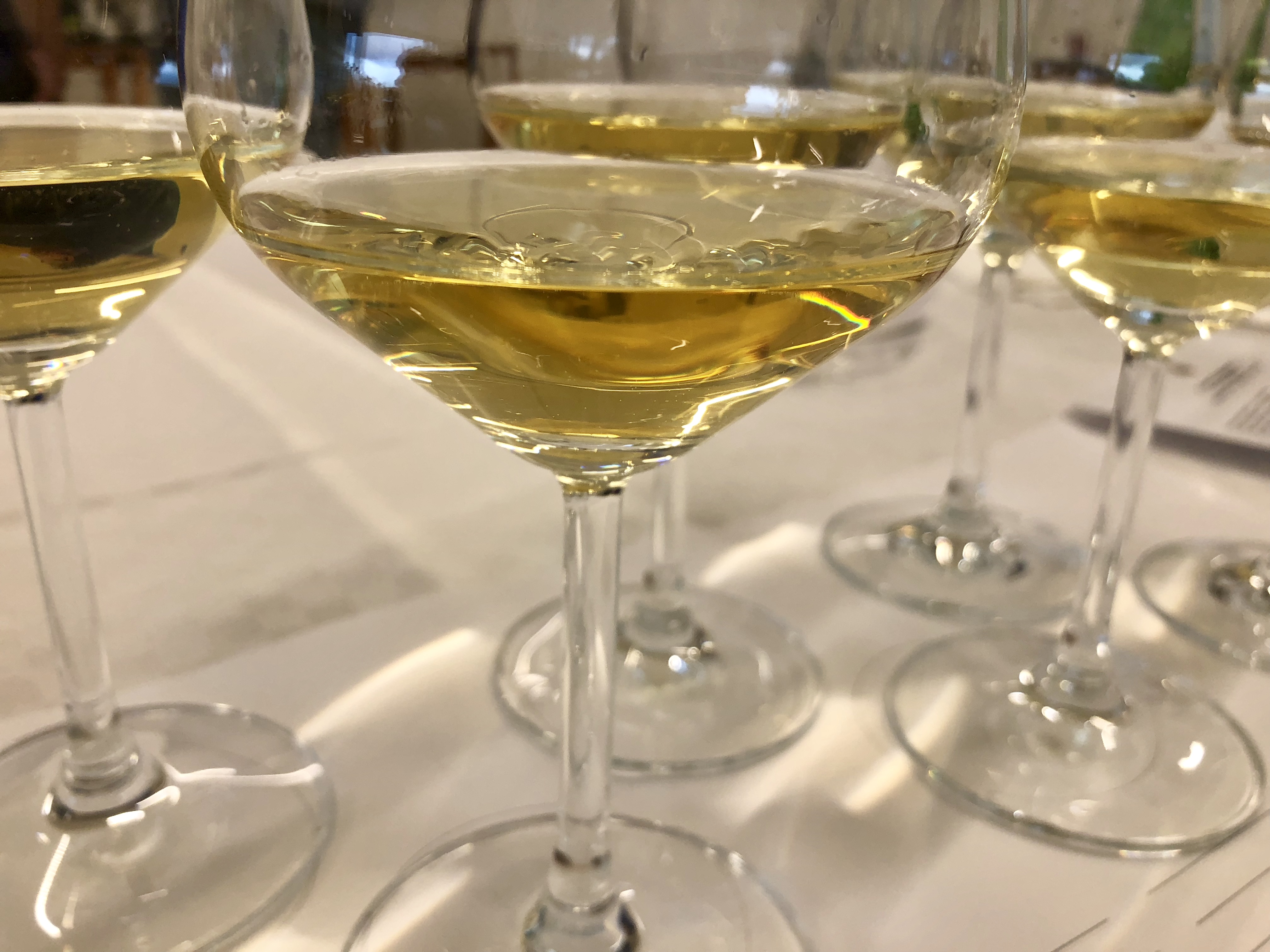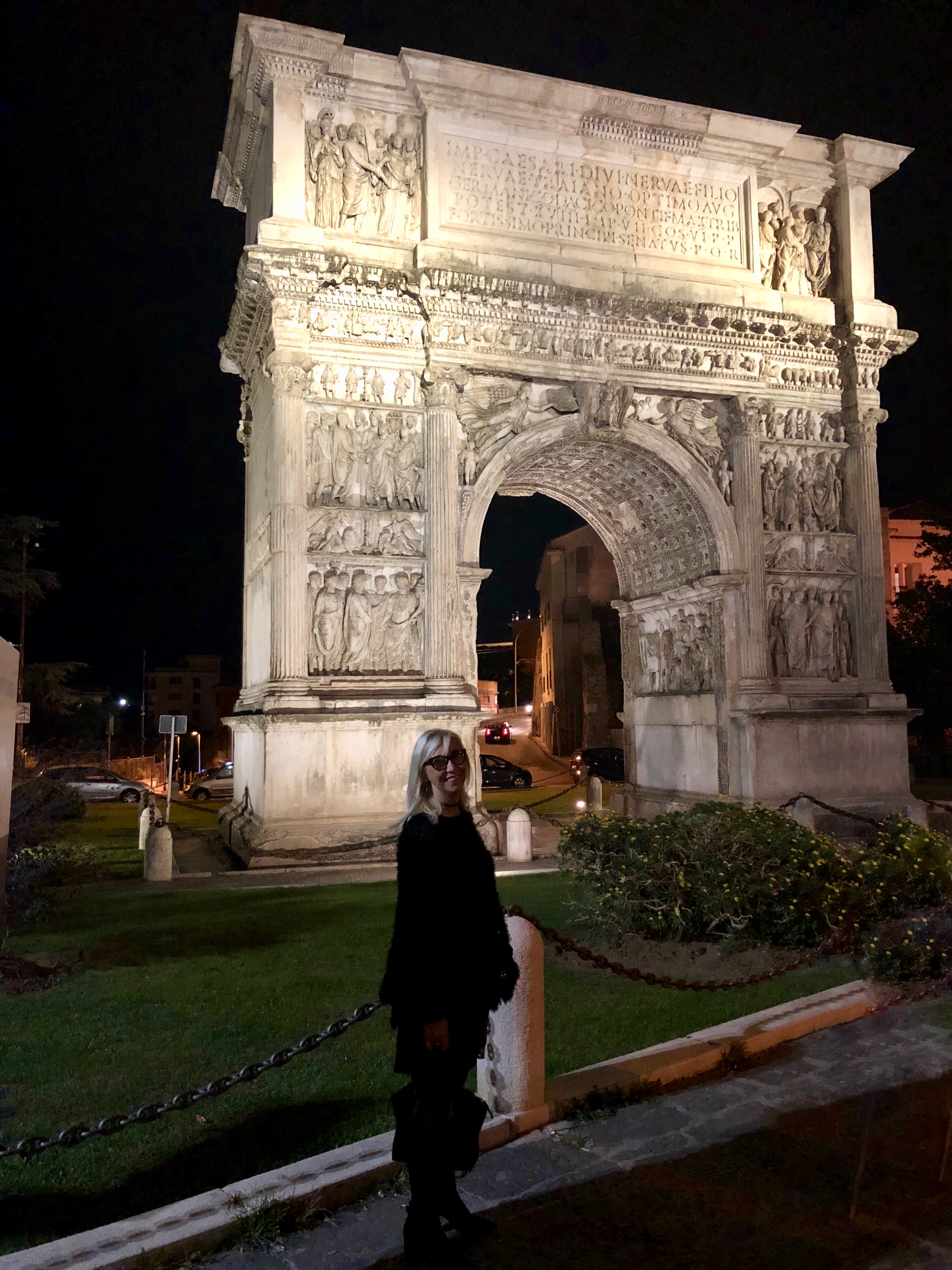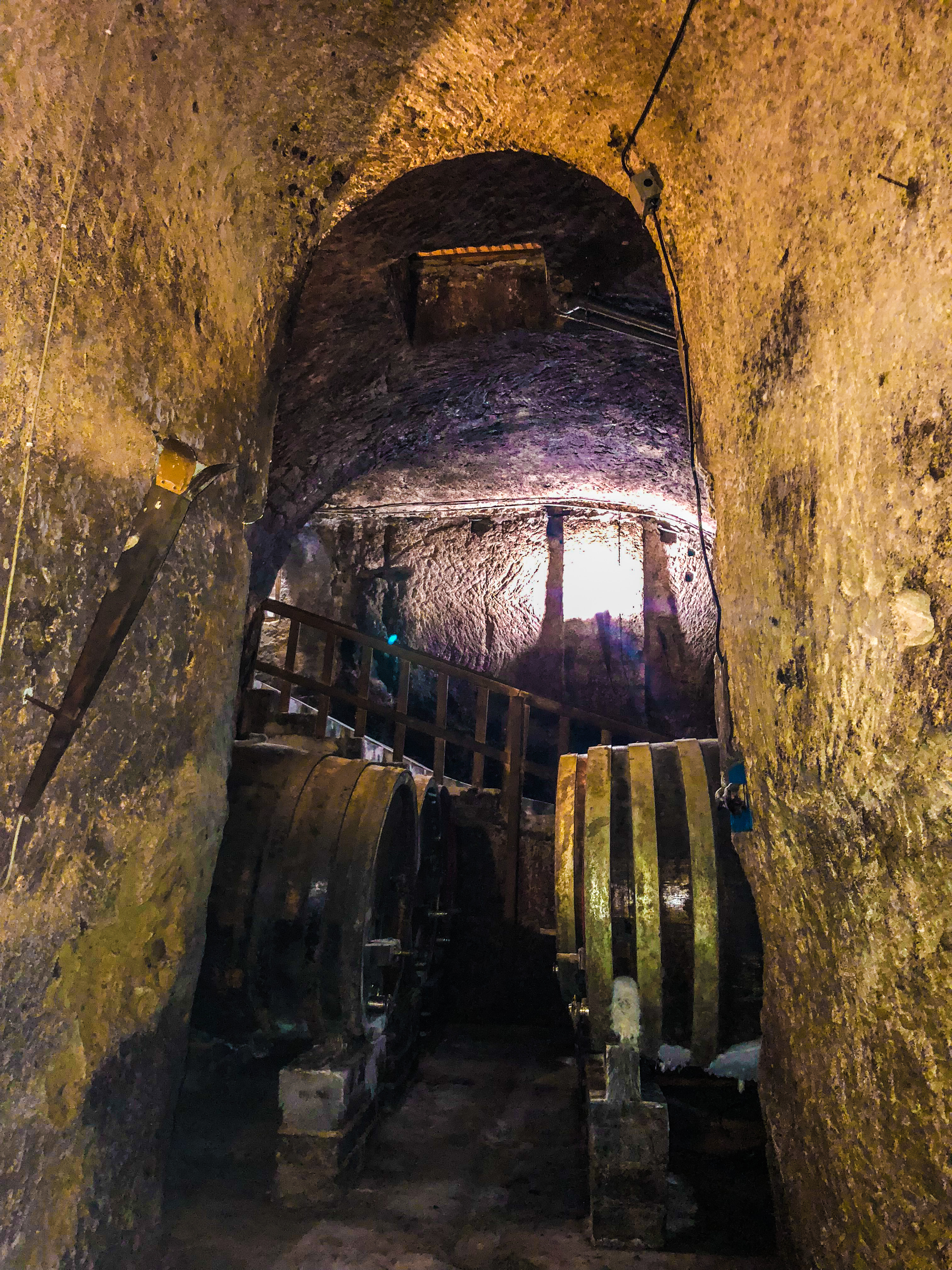The 'Barbera del Sannio' you do not expect!
It seems strange to speak of Sannio referring to Barbera. A territory recognized 'European City of Wine 2019' from Recevin, Network Community of eight hundred Cities of Wine. An inflow received by the success of his Falanghina that proud, and that for this land in the heart of the Apennines sannita, It is a great opportunity.
Premesso ciò, because of Falanghina not talk enough, I will focus on a wine that I tasted during my path enoturistico in Benevento: Barbera del Sannio! One, I put the exclamation point. Accustomed impetuous Barbera Piedmont, I did not expect to taste a wine traits so different: Barbera del Sannio 2016 in purity passed only in steel. The nose scents of rose and cherry, in mouth nature, freshness and softness. Davvero buona!
A grape from the bunch pyramid-conical shape that I met in Castelvenere, in the valley of Low Heat, in the province of Benevento. An area rich in biodiversity where a young winemaker, James Simon, He chose to invest its future in the activity wine. Following the tradition of the ancient underground cellars of Castelvenere, he built his cellar in a sandstone ridge about nine meters high, with a development of three floors tended to favor the movement by gravity of the wort. A sustainable reality that makes use of a rainwater collection system for the reduction of water and energy consumption, and photovoltaic panels on 'tree sculptures'.
Ma gold a rent to the oral ...
- Giacomo, the winemaker activity was not your first choice of professional life. You're an engineer. What brought you to this change of course?
I started the course in computer engineering studies in Siena, but after two years I decided to leave school. Then, I lived for four months in London, where I worked in a computer lab. Maybe that's where I realized that I could never find my "home" elsewhere. "I love my damn country", and this is where I decided to stay, to enhance what is good. The passion for nature and for the vineyard has helped me… the rest came by itself.
We must not abandon our territories ... places where they lived and "struggled" our families. What we must do is keep the memories and knowledge farmer. This is the reason that convinced me to build my future here, and I thank my my family, who has always supported me.
- I believe that sustainable development of the territory and the preservation of the wine heritage are the primary objectives for the future of viticulture. Premesso ciò, What do you think of the acceleration in the cultivation of Falanghina? Do you think you could risk a similar phenomenon to the area of Prosecco?
Cynthia, I can only tell you that a few years ago, winemakers near me, They told me that in these lands throughout the month of September he felt the scent white grapes Malvasia. Since he "came the Falanghina" you do not hear anything. After listening to many local elders, I deduced that the Falanghina has been introduced recently to such an intensive level purely to meet strong demand in the market. Unfortunately,, You are gradually abandoning all those varieties of grapes that each farmer had once implanted in the vineyards, and that once vinified, They gave full-bodied wines, tasty, perfumed, unique ... A real shame.
Now it's up to us to grasp winemakers – without being overwhelmed – the opportunity that this "success called Falanghina" offered us. We must show the world what's in addition to the Sannio Falanghina. Our area is rich in biodiversity, knowledge, potentiality. There are so many stories of wine and grapes, to discover and not to be set aside.
- In your basement I had the pleasure of tasting the Ancestral, a classical method obtained from a data base of Aglianico Rosato with early harvest and fermentation block. One of your experiment?
The Ancestral was a case. After reading, the idea of working in the cellar "without adding anything extraneous to the wine" he took a lot. Soon, in collaboration with my winemaker, will experience other varieties red berry type the Camaiola.
In the past it was used exclusively white wine. With sugar in some private cellars dared the second fermentation in the bottle, unfortunately without tools and valuable knowledge ... not always with positive results. Making sparkling wine, however, it was not new, as rightly highlights the book Pasquale Carlo, in the chapter on sparkling wine with Trebbiano grapes in Cerreto Sannita.
- The Sannio, Wine European City 2019. A great opportunity for the development of viticulture and for the promotion of the historical and artistic heritage of Benevento. About this, from person living on the territory, what are in your opinion the priorities that the authorities should develop predisposed to promote wine tourism in Sannio?
The reception! In the territory of Sannio there are potentially many small tourist towns but not connected to each other ... without a net. The biggest challenge is being able to create the right synergy between these countries, preventing the escape of young people abroad, giving them the right opportunities, so that you can create a job with the local resources. Cooperation is the key. We do not need to build hotels, or casinos, or parks ... we have it all. We just need to improve reception services. We do not want to focus on mass tourism, but the tourism interested and attentive. Citizens must return to fall in love with ... Sannio respecting it as it deserves!
I take the word…
I can only share the reflections made by Giacomo, and that I myself, in the past days in the Sannio, I have repeatedly stressed. What hope, is that this opportunity for 2019 is cultured, with the implementation of strategies to support the visibility and promote the area. What is left to say ... maybe just that young Italian winegrowers are growing, very well and thankfully!
The. Agr. Simone Giacomo – Via Curtole Castelvenere (BN) www.simonegiacomo.it






